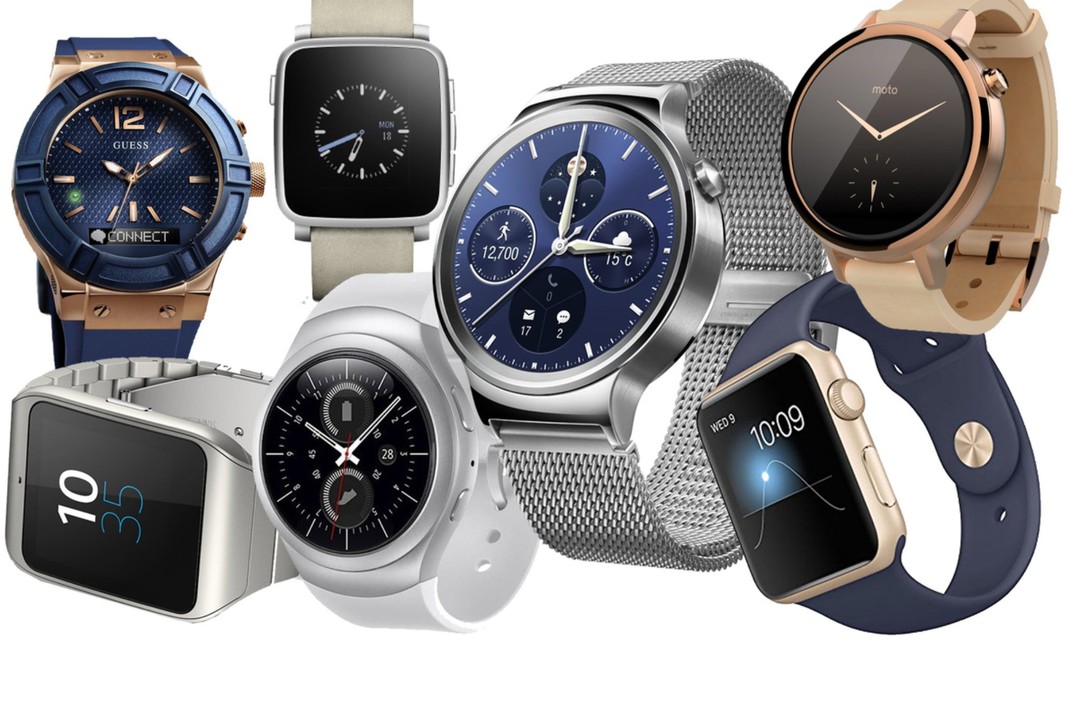It’s no secret that smartwatches are becoming increasingly popular, with Apple and Samsung leading the charge. But what does this mean for traditional watch manufacturers? Are smartwatches a threat to their business?
The short answer is yes, smartwatches are a threat to traditional watch manufacturers. Smartwatches have many features that traditional watches do not, such as the ability to track fitness data, receive notifications, and run apps. As a result, smartwatches are appealing to a wider range of consumers than traditional watches.
However, it’s important to note that traditional watch manufacturers are not without their own strengths. They have years of experience in manufacturing high-quality watches, and they benefit from strong brand loyalty. Additionally, smartwatches are still relatively new, and it remains to be seen whether they will ultimately replace traditional watches or simply complement them.
What Are Smartwatches?
Smartwatches are wearable computers that are designed to be worn on the wrist. They typically have a color touch screen display and include sensors that can track fitness data, such as heart rate and steps taken. Additionally, smartwatches can receive notifications, such as text messages and phone calls, and run apps.
What Are Traditional Watches?
Traditional watches are timepieces that have been around for centuries. They are generally made from metals, such as gold or silver, and sometimes include gemstones. Traditional watches do not typically have color touch screens or the ability to track fitness data. However, some high-end traditional watches may include features such as a second time zone or a stopwatch.
How Do Smartwatches Differ from Traditional Watches?
One of the key differences between smartwatches and traditional watches is their functionality. Smartwatches are typically more advanced than traditional watches, offering features such as the ability to track fitness data, receive notifications, and run apps.
In addition, smartwatches tend to be smaller and more lightweight than traditional watches, making them more convenient to wear. However, traditional watches also have their own strengths, such as high-quality manufacturing and strong brand loyalty. Ultimately, it remains to be seen whether smartwatches will replace traditional watches in the long term or simply complement them.
What Are Some Benefits of Using a Smartwatch Over a Traditional Watch?
So, are there some benefits of wearing a smartwatch over a traditional watch? Well, the answer is YES! And below is a quick highlight of some of the benefits you stand to gain from using a smartwatch.
1. Functionality – smartwatches offer more advanced features than traditional watches, such as the ability to track fitness data and receive notifications. This makes them a more attractive option for many consumers who are looking for a convenient way to stay connected and stay active.
2. Convenience – smartwatches are typically smaller and lighter than traditional watches, making them easier to wear on a daily basis. This makes them ideal for people who lead busy or active lifestyles, as they don’t have to worry about struggling with a heavy watch while running or working out.
3. Style – smartwatches come in a variety of styles and designs, so there is something to suit everyone’s tastes. Additionally, manufacturers often release new smartwatch models on a regular basis, so you can stay on top of the latest trends in smartwatch design.
4. Technology – smartwatches are powered by advanced technologies, such as touchscreen displays and sensors that gather fitness data. This gives smartwatches an edge over traditional watches when it comes to functionality and usability. Overall, there are many great benefits to using a smartwatch over a traditional watch, making them a popular choice for many consumers.
The Rise of Smartwatches and Their Growing Popularity Among Consumers
Smartwatches are a relatively new product category, but they have quickly become one of the most popular consumer electronics items on the market. In 2015, smartwatch shipments totaled 18 million units, and that number grew to 62 million units in 2019. It is expected the number of shipments will surpass 115 million shipments in 2022, according to Statista.
The growing popularity of smartwatches can be attributed to a number of factors, including the increasing functionality of these devices, their convenience, and their stylish designs. Additionally, traditional watchmakers such as Tag Heuer and Fossil have entered the smartwatch market, helping to legitimize the product category and attract even more consumers.
As smartwatches continue to gain in popularity, it’s important to note that traditional watch manufacturers are not without their own strengths. Many traditional watches are of high quality and come from brands with a strong brand loyalty. Furthermore, smartwatches may not be the best choice for users who want to maintain a minimalistic or classic style.
Despite these potential challenges, smartwatches are likely to continue growing in popularity among consumers in the years to come. As manufacturers continue to improve smartwatch technology and introduce new models, smartwatches will become increasingly useful and desirable products that serve as an important complement to existing consumer electronics devices.
How Are Traditional Watch Manufacturers Responding to The Rise of Smartwatches?
As smartwatches have grown in popularity, traditional watch manufacturers have been forced to adapt in order to stay relevant in the market. Many traditional watchmakers, such as Tag Heuer and Fossil, have entered the smartwatch market with their own products.
Additionally, traditional manufacturers are beginning to add smartwatch features to their existing product lines. For example, the Tag Heuer Connected Modular 45 combines classic Swiss watchmaking with smartwatch technology, while the Montblanc Summit uses Google’s Android Wear platform to provide users with a variety of smartwatch features.
These moves by traditional manufacturers show that they are aware of the threat posed by smartwatches and are working to stay competitive in the market. While smartwatches may eventually come to dominate the market, traditional watchmakers still have a chance to stay relevant by offering products that appeal to users who want the best of both worlds.
What Are Potential Impacts That Smartwatches Could Have on The Traditional Watch Industry?
The smartwatch boom could have a number of impacts on the traditional watch industry, both positive and negative. On the positive side, the growing popularity of smartwatches could help to legitimize the product category and attract even more consumers. Additionally, traditional watchmakers who enter the smartwatch market can benefit from the expertise they have in manufacturing high-quality products.
On the negative side, smartwatches could eat into the sales of traditional watches, causing financial difficulties for manufacturers who rely heavily on watch sales. Additionally, smartwatches could eventually come to dominate the market, leaving traditional watchmakers struggling to compete.
Overall, the impact that smartwatches will have on the traditional watch industry remains to be seen. However, it is clear that smartwatches will play an important role in the future of consumer electronics and traditional watchmakers need to be prepared for these changes.
How Can Smartwatch Manufacturers Increase Their Competitive Edge in The Smartwatch Market?
There are a few ways smartwatch manufacturers can increase their competitive edge in the smartwatch market. First, they can continue to improve smartwatch technology and introduce new features that appeal to consumers. Additionally, smartwatch manufacturers can focus on creating stylish and attractive designs that stand out from the competition.
Also, smartwatch manufacturers can work to create a strong brand identity that resonates with consumers. By taking these steps, smartwatch manufacturers can make their products more appealing to consumers and better positioned to compete in the smartwatch market.
In order to increase their competitive edge in the smartwatch market, smartwatch manufacturers can focus on improving existing technologies and introducing new features. For example, they can work to improve battery life, reduce screen glare, and add more health-tracking capabilities.
Additionally, manufacturers could explore partnerships with other companies or develop their own software platforms as a way to differentiate themselves from competing products. In order to stay ahead of changing trends and remain competitive in this rapidly evolving market, smartwatch manufacturers must continue innovating and adapting to the needs and preferences of consumers.
Factors To Consider When Deciding Whether or Not to Invest in A Smartwatch
When deciding whether or not to invest in a smartwatch, there are several key factors to consider. One of the most important considerations is cost, as smartwatches can be expensive compared to traditional watches. In addition, it is important to consider the durability and reliability of smartwatches, as they may need more frequent repairs than traditional watches.
Another factor to consider when investing in a smartwatch is personal preferences. Some users may prefer the convenience and functionality offered by smartwatches, while others may prefer the classic design and aesthetic appeal of traditional watches.
Style preferences should also be taken into account, as smartwatches vary widely in terms of design and functionality. Some smartwatches are designed to be sleek and minimalist, while others are larger and more feature-rich. Ultimately, the best smartwatch for each individual depends on their personal preferences and needs.
Finally, it is important to consider the brand of a smartwatch when making a purchasing decision. Some brands may have better reputations and offer more features than others, while some may be less reliable or offer sub-par customer support. Overall, there are many factors to consider when deciding whether or not to invest in a smartwatch, so it is important to carefully evaluate these considerations before making a purchase.
What Is the Future Outlook for The Smartwatch Market?
The future outlook for the smartwatch market is difficult to predict, as this industry is still relatively new and rapidly evolving. However, some analysts believe that smartwatches may eventually overtake traditional watches in terms of popularity and ubiquity.
In addition, many experts foresee growth in the smartwatch market driven by innovations in smartwatch technology and an increasing demand for wearable devices among consumers. As smartwatches continue to become more sophisticated and consumer preferences evolve, it is likely that the smartwatch market will only continue to grow in the coming years.

